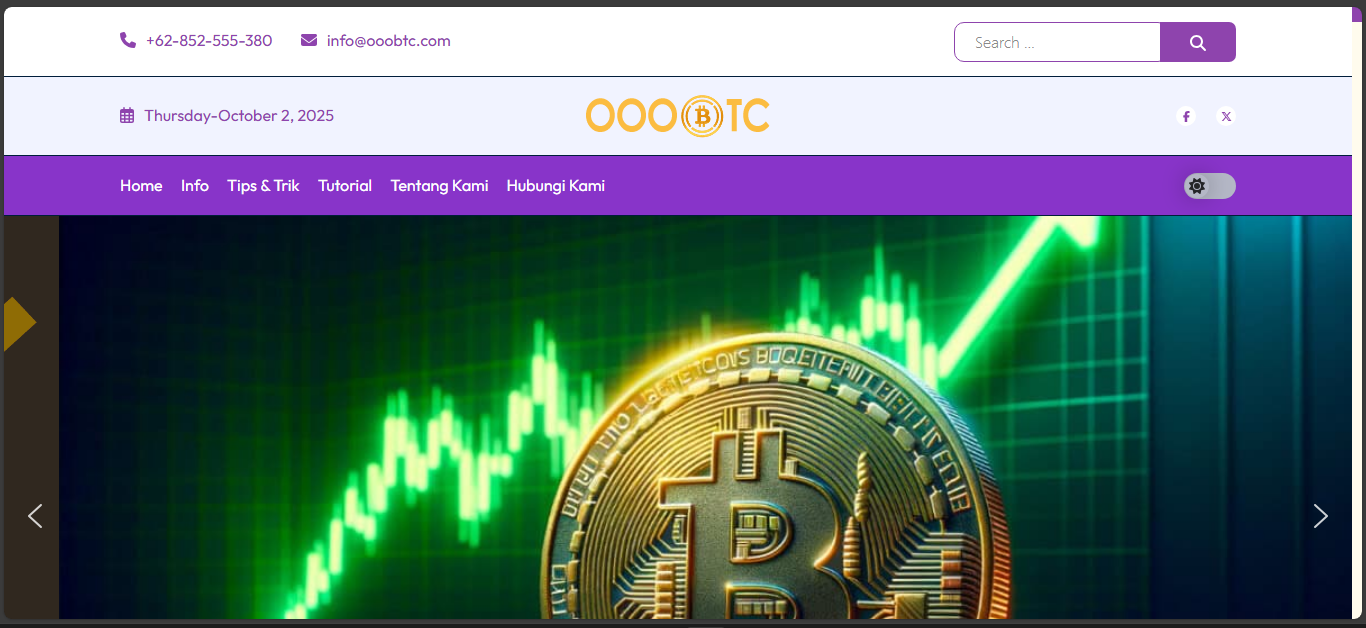OOOBTC – Exchange Review

OOOBTC started as a niche exchange with ambitions
OOOBTC entered the market claiming it could simplify trading for small investors. It leaned on low fees, a clean interface, and token-based incentives to attract early users. While never among the giants, it tried to present itself as a reliable choice for altcoin enthusiasts.
The exchange launched with a focus on accessibility. Most competitors used tiered fee systems or maker-taker discounts, but OOOBTC promised the same rate for everyone. That move appealed to newcomers who wanted clarity rather than complex charts of costs.
Fee system – flat for trades, percentage for withdrawals
The central hook was a flat 0.15 % trading fee. Both makers and takers paid the same. It removed the usual incentive structure but gave traders predictability. For small trades, that model was attractive.
Withdrawals were different. Instead of a fixed coin-based fee, OOOBTC charged a percentage – about 0.5 % of the amount moved. For larger withdrawals this became costly, which discouraged whales but kept micro-trading inexpensive. That mix was rare at the time.
Token support – narrow but specific
OOOBTC offered just under 20 tokens at its peak. Most were mid-cap or niche altcoins that bigger exchanges often ignored. Users could trade assets like Golem, Zilliqa, Status, Icon, and Project Pai. The limited choice meant liquidity was thin, but for a segment of traders it opened doors to tokens not widely available.
The platform also tried to support its own token, OBX. Holders could unlock reduced fees and referral bonuses. Friends invited through OBX-linked campaigns earned rewards only if they actually traded. That structure was supposed to increase genuine activity rather than empty sign-ups.
Location and transparency questions
OOOBTC described itself as Singapore-based. Yet official registration details were vague. No strong corporate footprint, no detailed leadership team, and limited compliance records were available. That lack of clarity kept institutional traders away.
For retail users, the exchange looked usable, but transparency issues always lingered in the background. Today, with the exchange inactive, those gaps in information feel even more significant.
Current state – inactive and untracked
At present, OOOBTC is flagged as inactive. Market volume is listed as zero. No order books are tracked, no reserve data is visible. This suggests the platform is either shut down or left in a dormant state with no functional market.
When an exchange sits untracked, it usually means delisting from aggregators and abandonment by the core team. In OOOBTC’s case, no communication channels remain active. Its disappearance happened quietly, without a major scandal or hack.
Strengths it once had
Before fading, OOOBTC did offer some strengths. Traders appreciated the clean cost structure and the ability to move in and out of smaller altcoins. The interface, while simple, was responsive enough for retail use. Referral rewards tied to OBX tokens also gave some incentive to bring new users on board.
For beginners, the exchange looked straightforward. Register, deposit, trade, and withdraw – the flow was uncluttered compared to rivals that layered advanced features over the basics.
Weaknesses that defined its downfall
Yet weaknesses outweighed the positives. Liquidity was shallow, making it hard to execute larger trades without slippage. The narrow token list limited choice and reduced traffic. Withdrawal fees in percentage form discouraged high-volume traders.
Most damaging was the absence of transparency. With little proof of reserves, no strong compliance framework, and unclear leadership, trust eroded. In a market driven by confidence, OOOBTC could not sustain a loyal base.
Snapshot: then vs now
| Factor | Then | Now |
| Trading fees | Flat 0.15 % for all trades | Irrelevant – platform inactive |
| Withdrawal fees | ~0.5 % of withdrawal amount | Not applicable |
| Token range | Around 17 altcoins | No listings remain |
| Own token | OBX – used for rewards | Obsolete |
| Activity status | Functional but low liquidity | Marked inactive, no tracked data |
| Reputation | Small, niche, semi-reliable | Forgotten, no visibility |
Why it faded without noise
Some exchanges collapse with drama – hacks, lawsuits, or regulatory bans. OOOBTC simply faded away. With limited users, shallow liquidity, and no corporate backbone, it had no fuel to keep running.
This quiet exit shows how fragile small exchanges can be. Without volume, even decent design choices can’t save them. And once users lose interest, the death spiral accelerates fast.
Lessons from OOOBTC
There are three main lessons from OOOBTC’s rise and fall:
- Flat fee models may attract beginners but can’t compete with tiered discounts at scale.
- Percentage-based withdrawals punish larger traders and limit growth.
- Lack of transparency eventually drives users elsewhere, no matter how cheap the service looks.
For traders, this highlights the importance of evaluating exchanges beyond low fees. Security, liquidity, and corporate clarity matter far more in the long run.
Final take
OOOBTC is now part of crypto history. It once offered clear fees, quirky withdrawal rules, and altcoin access that appealed to a narrow group. But without liquidity, trust, or growth, it could not survive.
Today, it stands as a reminder of how many small exchanges entered the market only to vanish quietly. For anyone discovering its name, the lesson is simple – look at active, transparent platforms instead. OOOBTC belongs to the past, not the present.
Disclaimer
“This content is for informational purposes only and does not constitute financial advice. Please do your own research before investing.”






